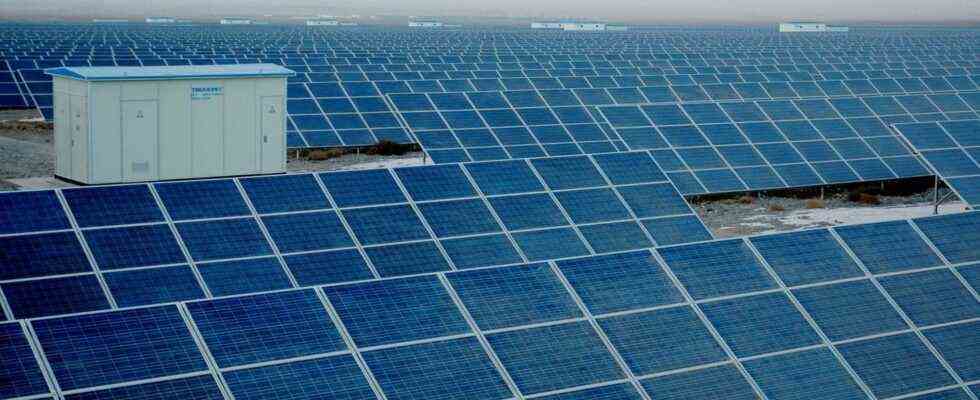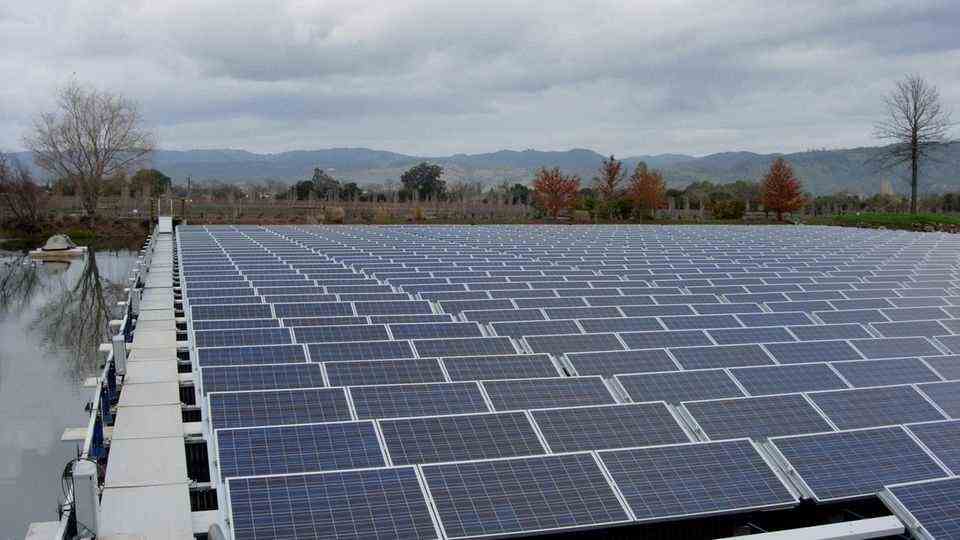New study
Solar energy cheaper than coal-fired electricity – this is how China becomes climate neutral
Large-scale solar power plant in China.
© Wang Jiang Zy / Picture Alliance
Climate neutral in 2060 – that’s what the party decided. The most important component is solar energy. In just a few years, solar power with battery storage should be cheaper than coal power.
Photovoltaic systems have become significantly cheaper all over the world. But what does that mean for an economy? Researchers in China have published an analysis for their country that estimates the potential of solar energy. Beijing has long assumed that solar energy will be the cheapest way to generate electricity in the future.
A third of the newly installed solar capacity around the world goes into operation in China. Faster than the party thought, the current output of 250 gigawatts is twice as high as planned. Chinese experts estimate the potential of solar technology so high because they assume that the efficiency of the panels will continue to increase. In addition, it is believed that solar panels will have a much longer service life than wind power plants, for example, because the panels do not have any mechanically stressed components.
How much solar is possible?
In order to get a model of the economics of solar energy in China, we have made the forecast of the changes in technology, the economy, solar resources and the Chinese grid for the period from 2020 to 2060. For this purpose, the weather data satellites from six years flowed into it. This served to determine the “technical potential” of solar energy. It indicates the amount that could be achieved with a maximum expansion.
As of 2020, this theoretical value is 13 times the total Chinese electricity demand – almost 100 petawatt hours. Because of further improvements in efficiency, the researchers assume a value of 150 petawatt hours for 2060.
Chic, ecological and self-sufficient – the capsule for the wilderness
8 images
The analysis also calculates the electricity costs – without subsidies or levies. According to this, solar power can be generated at the same price as coal power as early as 2022. However, surcharges due to the problem of caching are not included. Like Western experts, the Chinese researchers assume that the price of solar energy will likely continue to fall. And radically. In 2030 the price should be around 27 percent of today’s price, in 2060 it should be only 6 percent. For the same money there should then be 15 times the capacity.
This means that solar power will throw coal power out of the running, even if the climate and health costs are not taken into account, for example through a CO2 price.
Cheaper than coal-fired power
According to the researchers, this drop in prices will mean that the combination of solar energy plus battery storage will also be cheaper than coal-fired electricity in many parts of the country from around 2030 onwards. Battery storage will be able to compensate for the fluctuations of day and night, for which no fossil power plants would have to be kept ready.
However, China faces the same problems as other countries. The locations for the expansion of solar energy are far away from the consumers. The entire network must therefore be massively expanded. Because of the great distances, a technical leap has to be made in China. In order to reduce line losses, massive research is being carried out on the Supra lines. Above all, however, the problem remains with what the required batteries are to be built. That would hardly be possible with current lithium-ion battery technology. China alone would then need a third of the world’s cobalt reserves.
Companies such as China’s largest battery manufacturer Contemporary Amperex Technology Co. are therefore developing rechargeable batteries without nickel and cobalt. But in principle, the researchers believe they are in a good position. After all, all of the technology, production and research required for the energy transition in China are already available in the country.
The researchers assume that more than half of China’s electricity can be generated by solar energy. The carbon neutrality target announced for 2060 would not have been achieved. China has large hydropower projects and the largest installed wind power capacity in the world. To do this, the country relies on nuclear power. In addition to conventional nuclear power plants, research is carried out on fusion technology. But mini-reactors based on molten salt technology could become faster, but ready for the market.
source: PNAS



